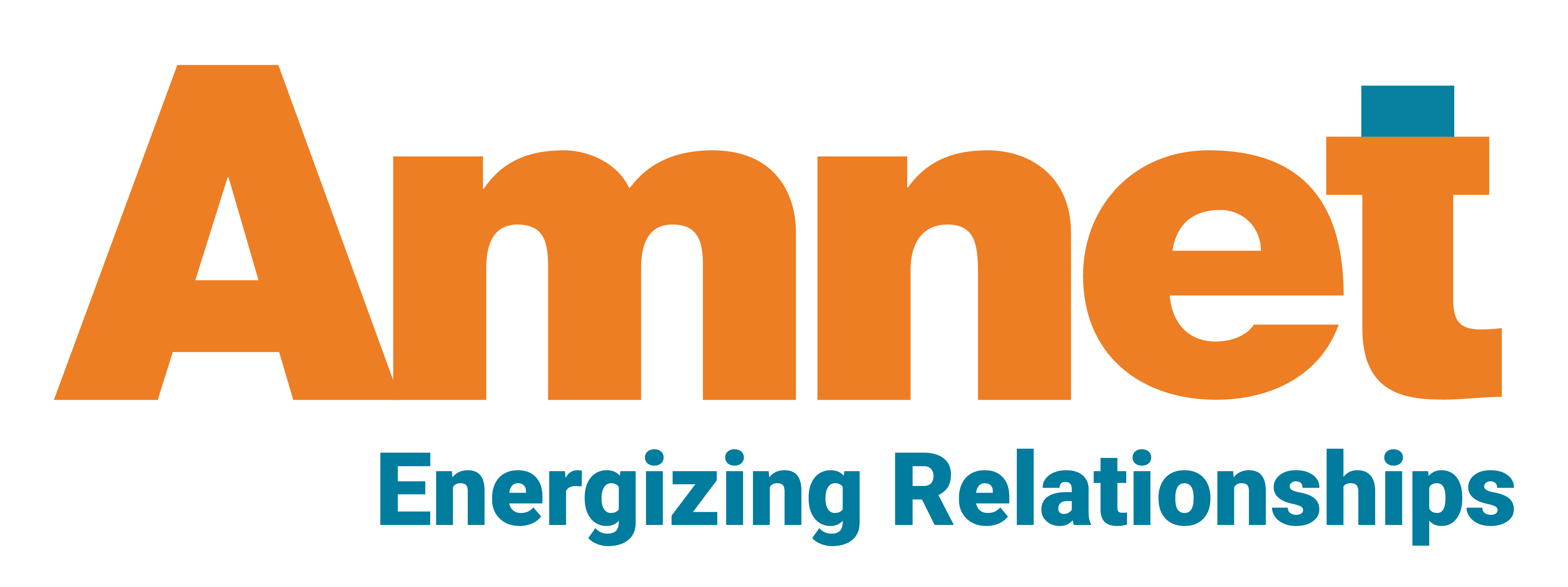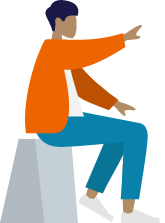JONATHAN: As our culture continues to undergo significant digital transformation we increasingly live in a world where skill sets evolve rapidly and specialized expertise is in growing demand. As new opportunities emerge, the needs of learners also change. Students expect more in the classroom: mobile access, privacy, instant feedback and results. Higher education institutions are pivoting accordingly with their adoption decisions.
This digital transformation offers new engagement opportunities for all kinds of situations, especially for students with disabilities who are increasingly able to tap technology to level the field. Properly coded products can interface with assistive tools that allow for enhanced learning by students with physical and text-related challenges.
Accessibility (ensuring all learners have an equivalent experience in the classroom regardless of ability) is one of the factors that has leapfrogged in importance across educational institutions in the United States. With a shift in expectations, we are also witnessing a change in the way materials are considered before adoption. Increasingly, publisher sales hinge on how close their products align with universal accessibility standards (generally the WCAG 2.0 AA standards). This can often involve requests to content producers for accessibility conformance documentation, product audits, clarity on development roadmaps, and awareness of effective alternatives as needed.
We have passed the tipping point as accessibility becomes a requirement in the higher education market.
I am happy to share that Pearson has stepped up to this challenge in a big way. It is the right challenge to embrace and aligns with our core mission that all learners must have an equal opportunity to learn and succeed.
To better understand the situation on the ground, and how accessibility is becoming a universal requirement, I reached out to Philip Voorhees who has been working in the disability space for over 20 years. Philip is currently the Technology Accessibility Coordinator at the University of Nevada–Las Vegas. Prior to UNLV, Philip served as the Assistive Technology/Accessibility Specialist at the Tennessee Board of Regents and was the architect of TBR’s state wide accessibility initiative.
JONATHAN: Hi Philip, thank you so much for your time today. Can you share some of your thoughts on why the procurement of “born accessible” educational materials has become increasingly important for institutions of higher education?
PHILIP: Certainly Jonathan. Higher education institutions have a federal and possibly state obligation to ensure individuals with disabilities using our educational materials and technologies are able to independently acquire the same information, engage in the same interactions, and enjoy the same benefits and services within the same timeframe as their nondisabled peers, with substantially equivalent ease of use. We can no longer address the inaccessibility of adopted or procured educational materials and technologies as “ad-hoc, after-the-fact” workarounds leaving the end user with a disability unequal and often delayed access to those materials. As we have found in federal ADA/504 enforcement efforts in higher education, our actions need to promote adoption and procurement of accessible materials up front instead of methods of administration that create access barriers to persons with disabilities due to our decisions to remediate materials for accessibility post-adoption or purchase. Further, trying to remediate vendor materials for accessibility is not a sustainable business and service model for institutions of higher education and thus introducing the value of accessible materials to vendors operating in the higher education marketplace.
Adopting a proactive approach of building a foundation of accessibility to help develop a universally designed environment will not only help meet our obligations to persons with disabilities, but will better address the variability of all end users. How many of us have benefited from the availability of captions in situations like not understanding the accent of an instructor or actor in a video, watching the news at the airport, or not wanting to disturb others around us in a quiet environment? While captions are a WCAG 2.0 conformance guideline for the deaf and hard of hearing community, more people benefit from using captions than the group the design was originally intended for. To wit, there is far more to be gained by using accessibility as a foundation to usability than just the minimum conformance it provides, and demonstrates the added value vendor and higher education partnerships bring to procuring “born accessible” materials.
JONATHAN: You worked for the State of Tennessee Board of Regents to establish a rigorous accessibility program. Would you mind sharing a bit about this innovative program and how you rolled it out across the state?
PHILIP: This was a very extensive process that required many layers of planning, partnerships, and priorities throughout the TBR system. We rolled this initiative out through a system accessibility task force that included representatives from each institution. We employed a “train the trainer” model to train more than 2,000 institutional faculty, staff, and task-force members to support each institution’s accessibility efforts to modify and employ an accessibility initiative template provided by the TBR system office. The TBR system office implemented a systemwide textbook audit to determine the accessibility of current adoptions used at our institutions. We found that out of 10K plus unique titles, only 10% could be delivered as accessible. We accomplished the aforementioned task through partnerships with supply chain vendors from content creation through end user players for ebooks. I will keep this response specifically to procurement. Our procurement initiative was essential in moving the system into requiring vendors to provide us with accessible materials and technologies in order to be considered as a business partner. In this process we created a specific workflow employed at all TBR institutions that required all adopters to follow in order to meet our obligations to persons with disabilities. This workflow included documentation to determine the current accessibility status of a vendor’s offering and accessibility roadmap for remediating any accessibility issues found with the product. No new and renewing contract could be signed or material adopted without this process. The key to this workflow’s success was the TBR system’s dedication to the accessibility initiative and our willingness to partner with vendors in helping them meet our needs for accessible materials and technologies.
JONATHAN: Fascinating, Philip. Part of the success for such a program involves multiple partnerships at various levels. I am happy to share that Pearson was able to successfully partner with schools across Tennessee in this initiative. Let’s focus on the publisher partnerships. What are the top accessibility challenges that colleges and universities need publishers to partner with them on?
PHILIP: I will not speak to the priorities of higher education institutions in answering this question. However, my experience and conversations with colleagues have identified several challenges that rise to the top.
Accessibility team contact to partner with and
- A clear Accessibility Statement of what the vendor is doing about accessibility, including published VPATs, various guideline testing results, accessibility demonstrations, and Accessibility Roadmaps for products and services
- Workarounds for materials not yet “born accessible” and conformance issues identified in an accessibility roadmap
- Robust and consistent accessible design, delivery methods, and tools for “born accessible” materials that allow for the use of a variety of assistive technologies and user preferences
- Training resources to train faculty, DS providers, end users and vendor sales staff on how to select and use “born accessible’ materials and delivery systems. Also, how to report accessibility issues and build workarounds.
- Development of a library of accessible STEAM objects for faculty use in their courses
- Partnering with assistive technology vendors to better use “born accessible” materials
The key to the entire process is building effective partnerships with vendors.
JONATHAN: Thank you Philip, we understand that we have the same goals and missions and appreciate the willingness for partnership. How do formats like properly structured and described EPUB3 factor into the discussions?
PHILIP: These are essential conformance issues so an individual with a disability can effectively access these materials with or without the use of assistive technology. This will also provide usability and multiple means of representation to better meet the variability of the audience. Simply said, EPUB content is by default dynamic and reflowable making it far easier to use on multiple devices. For example, instead of forcing the reader to pan and zoom around preformatted content, EPUB, more generally, makes content accessible to different modes of consumption, including assistive technology, and is one of the key characteristics that distinguishes EPUB from other portable document formats like PDF. EPUB is the future of “born accessible” publishing and promises independent access and acquisition by persons with disabilities that persons without disabilities currently take for granted.
At Pearson, accessibility is important to our customers and it is of equal importance to us. Content producers must align with standards, and we check against them. We have the same expectations for our product development partners that our customers have for us about accessibility.
The rise in accessibility requests from our customers has had many positive effects across our business. We now consider accessibility far upstream in the product life cycle, enabling our products to increasingly be in fact “born accessible.”
Disclaimer:
This is to inform readers that the views, thoughts, and opinions expressed in the article belong solely to the author, and do not reflect the views of Amnet.
Copyright © 2023 Amnet. All rights reserved. No part of this publication may be reproduced, distributed, or transmitted in any form or by any means, including photocopying, recording, or other electronic or mechanical methods, without the prior written permission of the publisher, except in the case of brief quotations embodied in critical reviews and certain other non-commercial uses permitted by copyright law. For permission requests, write to [email protected].









